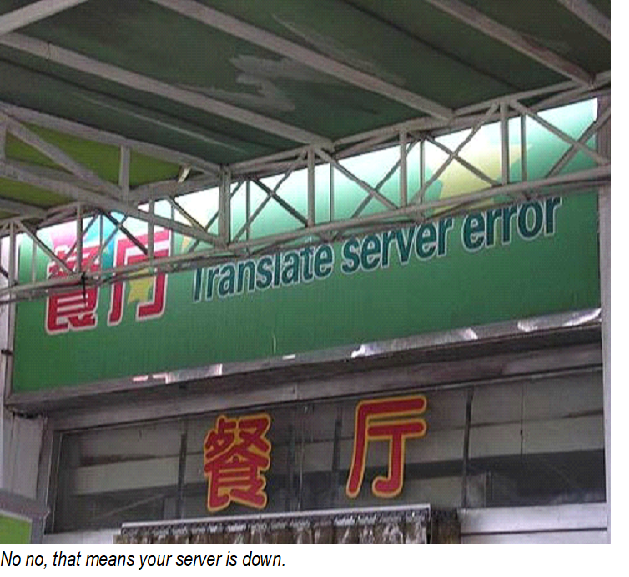Machines make our lives easier; no one doubts that. Think of the wealth of information that’s just a few clicks away and right at our fingertips, giving us instant answers to our questions. But should we reach for the computer when we’re looking for language translation services?
Yes, the technology exists. You can simply plug in one text, select your current language and the one you want it translated to and with the push of a button, you can have an actual, instant translation in mere moments. Unfortunately, there’s no guaranteeing what you’re left with is an accurate translation.
Any language involves many nuances. Machines use rules and algorithms to translate text and as the old adage goes, rules are made to be broken. When they are, a machine doesn’t know how to take that into consideration.
While it may be convenient and fast, computers will never take the place of native speakers when it comes to professional translation. Current technology, while advancing, proves no match for speakers.
Who’s Using Machine Translations?
Wondering who’s turning to machine translation? You might be surprised to learn that companies outsourcing to non-English-speaking countries are moving toward machine translations (MT) for customer service needs.
Using machines means these companies can skip the costs involved in hiring native speakers. While saving the company money, it also gives instant translations to customers at any time of day. In a fast-paced world that doesn’t sleep, that kind of service is incredibly appealing.
It’s not all good, though and when machines make a mistake, it can lead to a major faux pas that is anything but professional. Consider the food festival misrepresented as a Clitoris Festival, the Translation Server Error Café in China? These MT gems wouldn’t have happened if a native speaker were translating or proofing written work.
There is a time and place for everything, of course, so MTs aren’t all bad. They can help you understand the general gist of a text, especially if you’re at least a little familiar with the language. When it comes to sophisticated, professional work, though, you’ll want to leave it to, well, the professionals. Of the human variety, of course.
You may think you can do a rough translation, then have a human proof the work and make necessary corrections but losing the original work will compromise the translation and all those important nuances will be lost.
The kicker? You won’t be saving that much money if you opt to approach your translations this way. Instead, you’re likely to wind up with a shoddy translation and still out of money by the time you have it fixed. You’re better off starting with a human and getting the closest translation possible from the original work.
Where Do Machine Translations Struggle?
Longer pieces of work, or those that are more complex, are more likely to encounter problems during MT. These machine translation programs aren’t able to process contextual clues or easily divide sentences as they’re intended.
You’ll also find cultural differences impact the way language is processed. Regional dialects and sayings may not come through during a translation. Even more problematic, that may have an entirely different meaning behind them that could dramatically alter the translation.
You’ll also find that idioms don’t translate well through machines. The meaning behind the words can’t be expressed or interpreted. Idioms are so ingrained in our everyday vernacular you may not even realise when they’re being used.
This isn’t just true for English speakers. After all, idioms are a worldwide phenomenon. Not only don’t you realise when you’re using them yourself, you likely won’t recognise them when you stumble across someone else’s.
Don’t Fire Your Translator Just Yet
Language is a living, breathing thing. You can strip it down to short sentences to try and make it more manageable for MTs, in the process, though, you’ll lose that part of a language that makes it sound human. What you’re left with will be lacklustre and far from professional.
Aren’t convinced just yet that MT isn’t the way to go? Consider these exceptional mistakes machines have made during the translation process. Ask yourself if you really want a machine representing you or your business. You may find the risks far outweigh the benefits.






 RSS Feed
RSS Feed